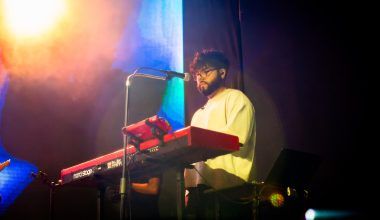Creating a music studio is an exciting journey that can take your passion for music to the next level. Whether you dream of producing tracks for the world or just having a creative space for yourself, setting up a music studio is a rewarding endeavor. The best part? You don’t need to be a tech wizard or have a huge budget to get started. Let’s dive into the essentials of setting up your music studio and make it the creative haven you’ve always wanted.
Why Setting Up a Music Studio Matters
A music studio is more than just a collection of equipment. It’s a space where creativity flows and ideas come to life. Having your own setup means you can experiment freely, work at your own pace, and develop your skills. Whether you’re a beginner or an experienced musician, the right environment makes all the difference. So, let’s start creating that space!
Finding the Perfect Space
Before we talk about gear and gadgets, let’s focus on the room. The space you choose for your music studio sets the foundation for everything else.
Consider the Size
You don’t need a massive space, but it should be big enough to accommodate your gear and leave room for comfort. A small bedroom, a garage corner, or even a dedicated basement area can work perfectly.
Acoustic Treatment
One of the most overlooked aspects of setting up a music studio is sound treatment. Bare walls and floors can cause sound reflections, leading to poor-quality recordings. Adding a rug, acoustic foam panels, or heavy curtains can dramatically improve sound quality without breaking the bank.
Lighting and Comfort
A well-lit and comfortable studio can boost your creativity. Consider using warm lighting and ergonomic furniture to make long hours feel less stressful. Remember, this is your creative space, so make it feel like home.
Essential Equipment for Your Music Studio
Now comes the fun part: picking the gear. While it’s easy to get carried away, you don’t need every gadget under the sun to get started. Let’s break down the must-haves.
Computer
Your computer will be the heart of your music studio. You don’t need the latest and greatest model, but it should have enough processing power to handle your music production software smoothly. A laptop or desktop with at least 8GB of RAM and a decent processor should suffice.
Digital Audio Workstation (DAW)
A DAW is the software you’ll use to record, edit, and mix your music. Popular options include Ableton Live, FL Studio, Logic Pro, and Pro Tools. Choose one that feels intuitive and fits your style.
Audio Interface
An audio interface is essential for connecting your instruments and microphones to your computer. It improves sound quality and reduces latency. Look for beginner-friendly options like the Focusrite Scarlett series.
Microphone
A good microphone is crucial for recording vocals and acoustic instruments. If you’re on a budget, a condenser microphone like the Audio-Technica AT2020 is a great choice.
Studio Monitors and Headphones
Studio monitors provide accurate sound reproduction, while headphones are perfect for detailed listening. Invest in quality brands like KRK, Yamaha, or Audio-Technica for reliable performance.
Building Your Setup
Once you have your gear, it’s time to put everything together. Here are a few tips to optimize your setup:
Arrange for Efficiency
Place your computer, audio interface, and monitors in a way that feels natural. Your workspace should allow you to focus on music without distractions.
Cable Management
Messy cables can quickly ruin the vibe of your studio. Use cable organizers or Velcro ties to keep things neat and accessible.
Test Your Gear
Before diving into recording, make sure all your equipment is properly connected and working. Run a quick test to check for any technical issues.
Creating the Right Atmosphere
Your music studio should inspire you every time you walk in. Personalize the space with posters, plants, or anything that sparks your creativity. Having a clutter-free and organized environment also helps maintain focus.
Learning and Experimenting
Setting up a music studio is just the beginning. Now it’s time to explore and learn. Watch tutorials, read blogs, and don’t be afraid to experiment. The more you practice, the more you’ll discover about your style and preferences.
Expanding Your Studio
As you grow, you may want to add more gear to your studio. Consider upgrading your microphones, adding MIDI controllers, or even investing in analog equipment. Take it step by step and remember that creativity matters more than gear.
Troubleshooting Common Issues
Every music studio faces hiccups. Whether it’s latency problems or software glitches, don’t let these challenges discourage you. Online forums, tutorials, and community groups are great resources for finding solutions.
Final Thoughts
Setting up a music studio is a journey, not a destination. Start small, be patient, and focus on enjoying the process. With time and practice, your studio will become a place where your musical ideas come to life.
For further reading, explore these related articles:
- Circles Post Malone Lyrics – A Song About Love, Loss, and Life
- Billie Eilish’s Big Moment at the Oscars 2022: A Night to Remember
For additional resources on music marketing and distribution, visit DMT Records Pvt. Ltd..






